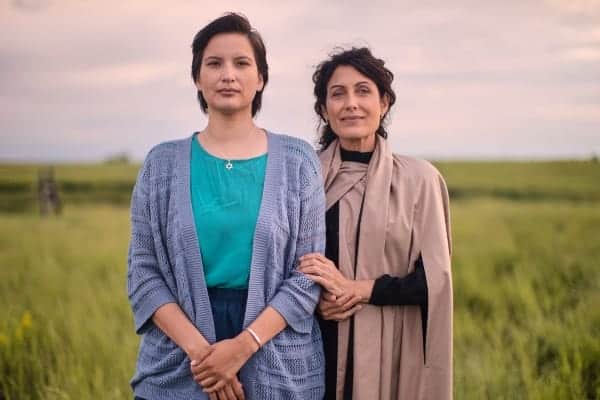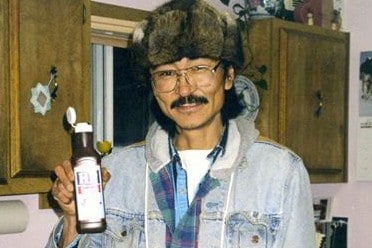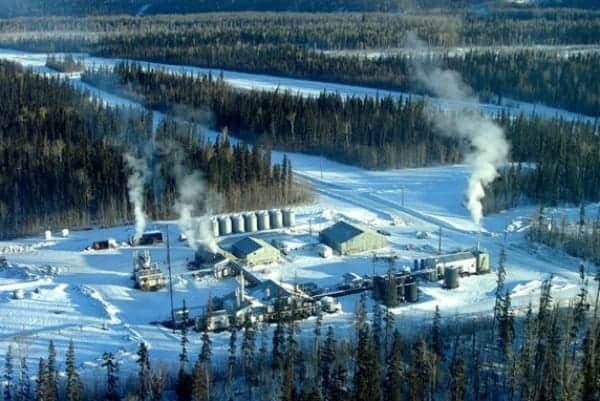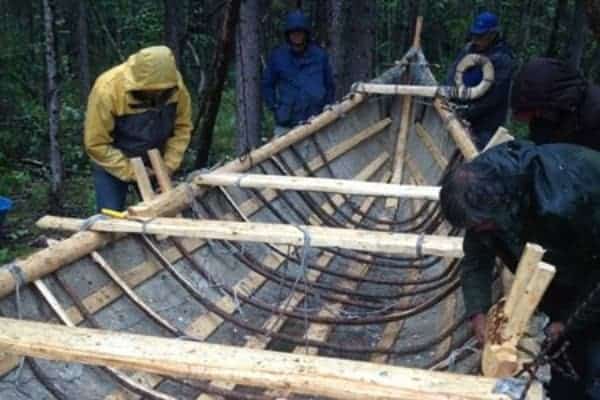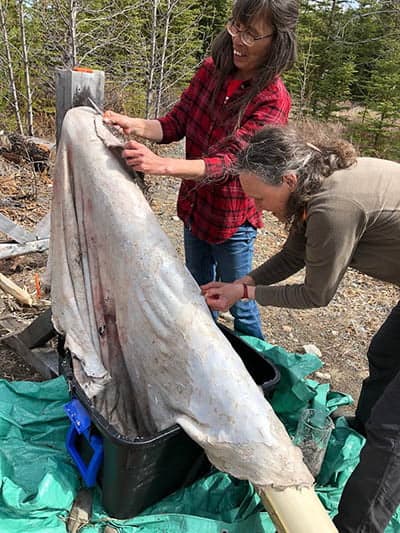
*This story has been edited for content at the request of its author. A different version of this story appeared in the February 12, 2020 issue of What’s Up Yukon*
Her name is Wolf Mother, Ghoóch Tlâ in Tlingit, and Colleen James in English. When James looks at the mountains around Carcross she sees the place where she picked berries with her grandmother as a child; the place that shows her what the weather will bring; and the place that guides her decision-making.
“My old people say that mountain will tell you what the weather is going to do,” she said, pointing to the peak they call Gopher Mountain. “They would watch the water and it would tell them; the birds would tell them; the fire would tell them. There was a universal language.
“So, my life story with that mountain has evolved as I grow and I’m sure it’ll evolve more.”
James grew up in Cowley, about halfway between Whitehorse and Carcross. Her mother was Tagish and Tlingit and her father was English.
“Life was pretty good. My parents and grandparents took good care of me, but my mother attended mission school and so my path was a lot more challenging because of that.”
James had her first child at a young age. Having to care for her daughter helped to ground her and steer her away from risky behaviour. It was then that she found her culture.
“I’m very blessed that my grandmother didn’t go to residential school,” she said. “She was my rock and taught me everything she could about the culture, the language, and our ways of knowing and being on this land. She was at the tail-end of the really old people, so I got to hear those stories that my old people say.”
James immersed herself in her culture by learning about the stories, the language and the ceremonies.
“I remember my grandmother would take me on the yearly round, meaning that we followed the berries, followed the birds, followed the fish, followed the animals, followed the plants that were in season,” said James. “We are part of the land and part of the water, so our roots are embedded here and they grow out.”
Throughout her life, her traditional territory has been a place of solace and a place to go for guidance. When Carcross/Tagish First Nation (C/TFN) voted against its initial land claim agreement, James went to the water for help.
“I was told to go to the river, the lake, and to cry in it. Let your tears go into it. It will work with you. So, on the day of voting, I went across the river to my old town site and I went down to the water and I prayed. I said, ‘we’re afraid, we’re scared, we don’t know what’s coming and we’re not sure it’s the right deal. Help us.’ And the answer was no, so the vote was no.”
Though the answer was no at that time, C/TFN did eventually settle its final land claim agreements. The First Nation became self-governing in 2006. This strong connection to the land runs in James’ family. For example, her uncle was part of the delegation that brought “Together Today for Our Children Tomorrow” to Ottawa in 1973. It was the landmark document that would lay the foundation for Yukon First Nation land claims.
“He told me that when they accepted the document, when it was going to go, the building just shook—it was a clap of thunder and lightning right above them,” she said. “He said every hair on his body stood up because he knew it was Yukon spirits of the land and the water acknowledging what those people were trying to do in Ottawa.”
Today, James spends her time caring for her family, volunteering in the community and working for her First Nation. She focuses on ensuring the land and the water are preserved for future generations through her work on various boards and committees. Among other roles, she works as a representative on the Steering Committee for Conrad Historic Site, located on the west side of Windy Arm, 16 kilometres from Carcross. Conrad was a traditional fishing, hunting and camping site used by the Tagish Kwan and Tlingit people. It also became a short-lived mining town in the early 1900s, and remnants of its mining history (buildings and equipment) can still be seen in the area today. C/TFN’s final agreement states that Conrad be established as a historic site that’s co-owned and co-managed by the First Nation and the Government of Yukon.
“Through involvement on the committee I’ve learned a lot more about the Conrad Historic Site, both its pre-contact history and its mining history,” said James. “My knowledge of the culture and the land use of the area has grown and I want to see the co-management be successful and celebrate the history of both cultures that have used the site and will continue to use it into the future.”
James is also involved in a C/TFN project to revitalize the Tlingit and Tagish languages by remembering and using Tlingit and Tagish place names.
“The more we revitalize our language, we discover knowledge that’s been there for a long time,” she said.
“Imagine a world where people feel like there’s enough. That they’re good enough, that they’re smart enough, that they’re beautiful enough,” she said. “If we feel like we’re part of the land and a part of the water, we might treat nature more kindly.”

